DetNet
detnet
"Deterministic" means that such flows provide guaranteed bandwidth, bounded latency, and other properties germane to the transport of time-sensitive data. These use cases differ notably in their network topologies and specific desired behavior, providing as a group broad industry context. Deterministic related technique includes Deterministic Networking (DetNet) in layer 3 and Time-Sensitive Networking (TSN) in layer 2. The requirments of the deterministic services is as the Figure 1 shown.
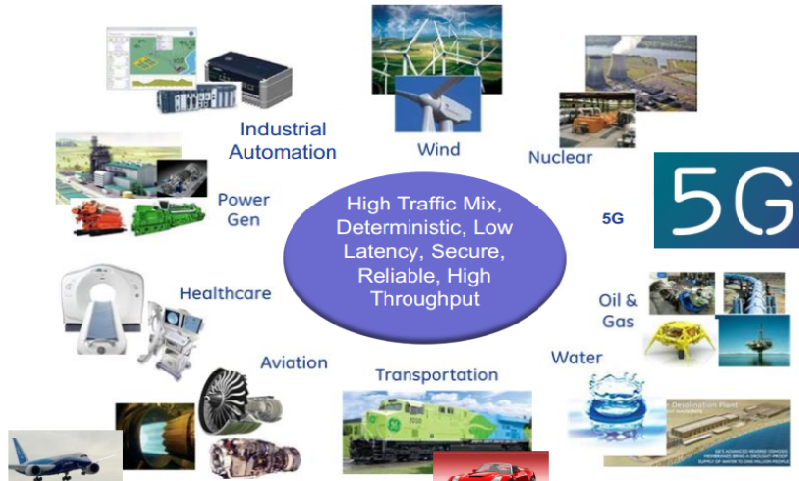
DetNet is proposed in IETF and provides a capability to carry specified unicast or multicast data flows for real-time applications with extremely low data loss rates and bounded latency within a network domain. These three techniques can be applied:
More information could be found at IETF: https://datatracker.ietf.org/wg/detnet/.
TSN is a collection of features in IEEE 802.1 that provide:
SDN controller is supposed to support DetNet/TSN, to make devices support DetNet/TSN more easily and configuration more simply in centralized control networks.
TSN configuration uses the concept of a Stream that is transmitted by a Talker to one or more Listeners. The Talkers and Listeners are located within end stations. Many TSN use cases require significant user configuration in the end stations that act as Talkers and Listeners. In order to accommodate this sort of TSN use case, the fully centralized model enables a Centralized User Configuration (CUC) entity to discover end stations, retrieve end station capabilities and user requirements, and configure TSN features in end stations as the Figure 2 shown.
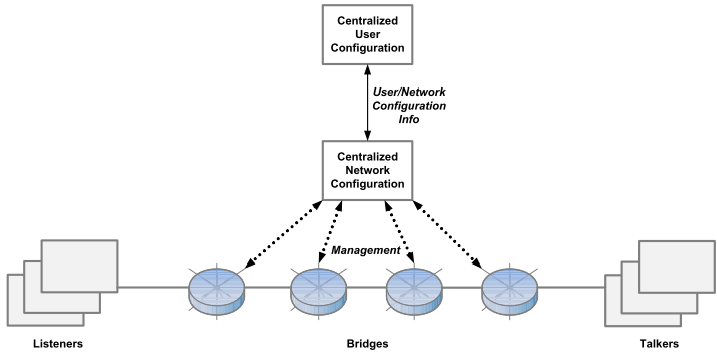
DetNet techniques in IETF used include:
DetNet operates at the IP layer and delivers service over sub-network technologies such as MPLS and IEEE 802.1 TSN.
Figure 3 illustrates a conceptual DetNet data plane layering model.
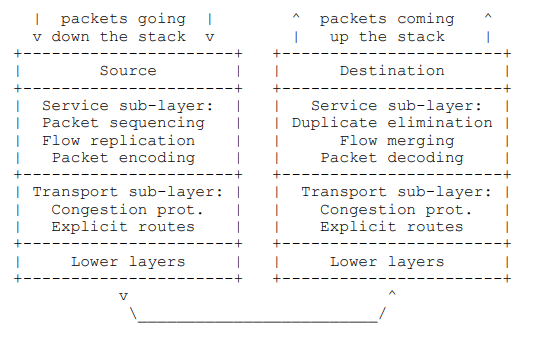
The DetNet SDN Architecture is as the Figure 4 shown including APP,controller and devices. The DetNet controller will receive configuration from APP by RESTCONF protocol, get topology information from DetNet bridges by BGP-LS protocol and configure the DetNet config Data by NETCONF protocol.
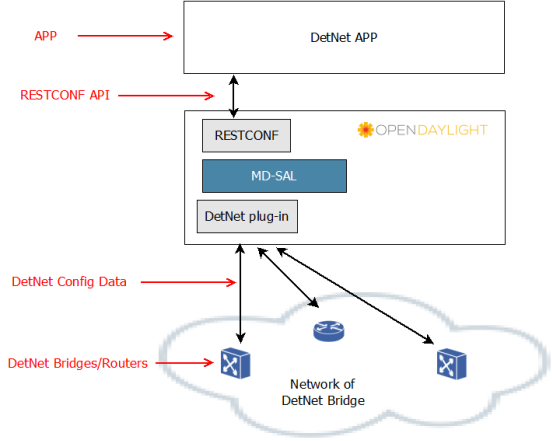
DetNet Plugin includes Topology Manage, Time Syn, E2E Manage, QoS, PCE and SB plugin modules. And in E2E manage module, there are three sub-modules including Service Manage, Bandwidth and Gate control as the Figure 5 shown. There are three use cases for the DetNet Plugin.
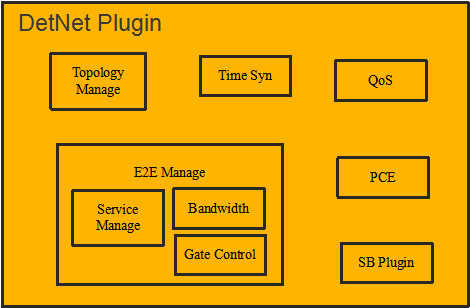
Interactions with other ODL modules
Components description
| Components | Description |
|---|---|
| Time Syn | Manage time synchronism information , configuration and configure it to DetNet devices by SBI protocol. |
| Topologe Manage | Manage DetNet bridges information and configuration, also the topology of the DetNet domain. |
| E2E Manage | Manage flow information and E2E service configuration. |
| QoS | Manage priority mapping and queue configuration. |
| PCE | Calculate the optimal path and DetNet related information based on the topology and flow information. |
| SB Plugin | Push the DetNet configuration to DetNet devices by SBI protocol. |
Use cases of DetNet are described at: https://datatracker.ietf.org/doc/draft-ietf-detnet-use-cases/.
The scope of this project is mostly about implementing a DetNet Plugin in ODL, make controller be able to cooperate with DetNet devices and provide deterministic service manually or dynamically.
The project is made from scratch, no vendor code, logos nor is anything included.
New Project. No Inbound Code Review required
TBD